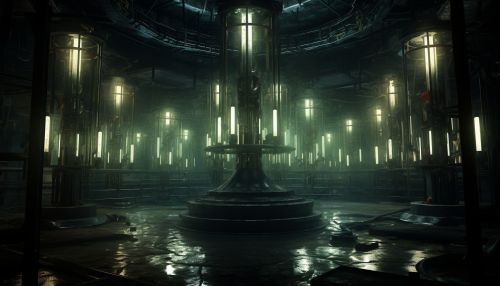Neutrino telescope
Introduction
A Neutrino telescope is a specialized facility designed to detect high-energy particles known as neutrinos. Unlike traditional telescopes that observe light or other electromagnetic waves, neutrino telescopes are designed to detect neutrinos, which are nearly massless subatomic particles that rarely interact with matter.
Neutrinos: An Overview
Neutrinos are one of the fundamental particles which make up the universe. They are also one of the least understood. Neutrinos are similar to the more familiar electron, with one crucial difference: neutrinos do not carry electric charge. Because neutrinos are electrically neutral, they are not affected by the electromagnetic forces which act on electrons. Neutrinos are affected only by a "weak" sub-atomic force of much shorter range than electromagnetism, and are therefore able to pass through great distances in matter without being affected by it.
Neutrino Detection
The detection of neutrinos is a challenging task due to their weak interaction with matter. However, several detection methods have been developed over the years. The most common method involves the use of large volumes of a transparent medium, such as water or ice, surrounded by photomultiplier tubes that detect the faint flashes of light produced when a neutrino interacts with a particle in the medium.
Neutrino Telescope Design
The design of a neutrino telescope depends largely on its location and the type of neutrinos it is designed to detect. For example, the IceCube Neutrino Observatory, located at the South Pole, uses a cubic kilometer of Antarctic ice as its detection medium, while the Super-Kamiokande detector in Japan uses 50,000 tons of ultra-pure water.


Neutrino Sources
Neutrinos can originate from a variety of sources, both terrestrial and extraterrestrial. These include the sun, supernovae, cosmic rays interacting with the Earth's atmosphere, and even nuclear reactors. By studying the neutrinos from these different sources, scientists can learn more about the processes that produce them, and about the neutrinos themselves.
Neutrino Astronomy
Neutrino astronomy is a branch of astronomy that observes astronomical objects with neutrino detectors in search of understanding the universe. This field of study is still in its infancy, but has the potential to provide valuable information about the most energetic and distant phenomena in the universe.
Challenges and Future Prospects
Despite the significant progress made in neutrino detection and astronomy, several challenges remain. These include improving the sensitivity and resolution of neutrino detectors, understanding the nature and properties of neutrinos, and developing new techniques for identifying and studying neutrino sources. The future of neutrino astronomy looks promising, with several new detectors planned or under construction, and the potential for groundbreaking discoveries in fundamental physics and cosmology.
